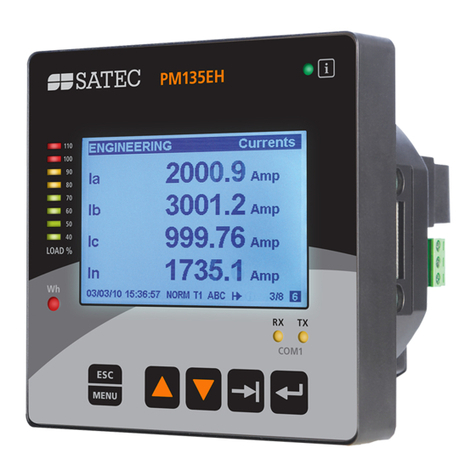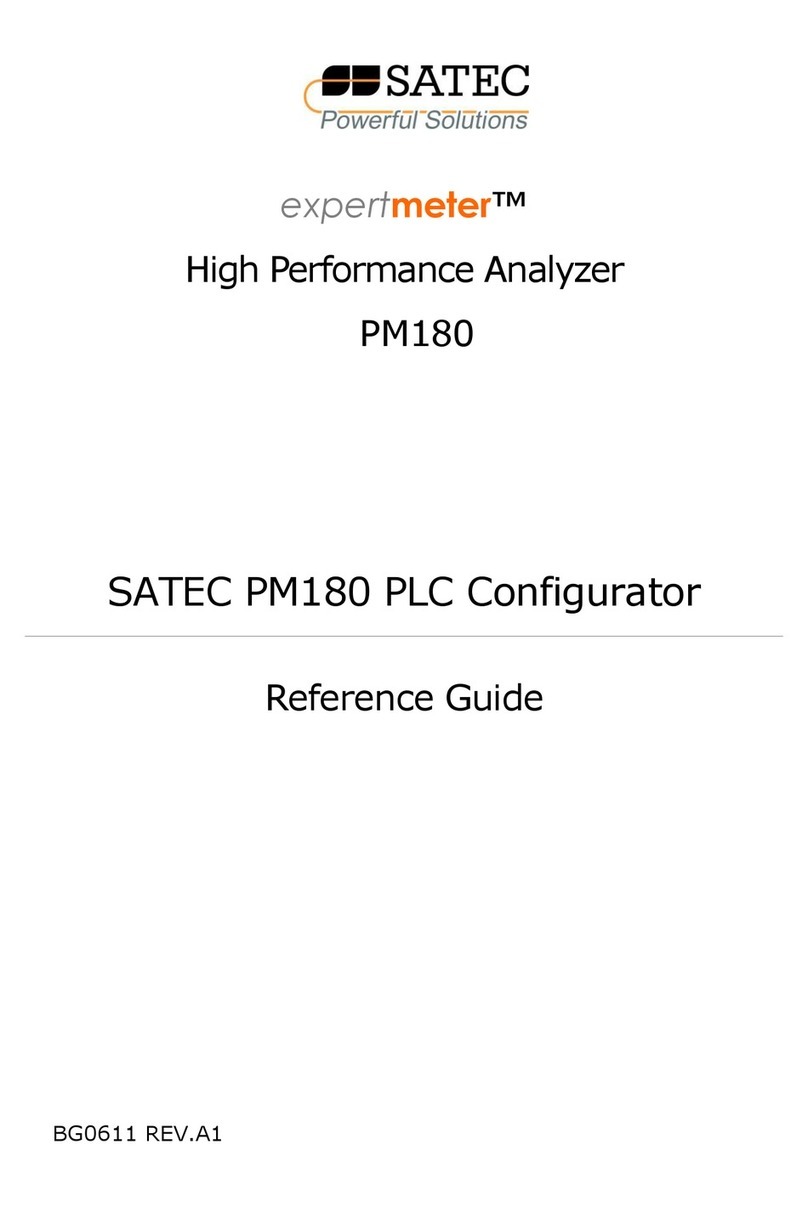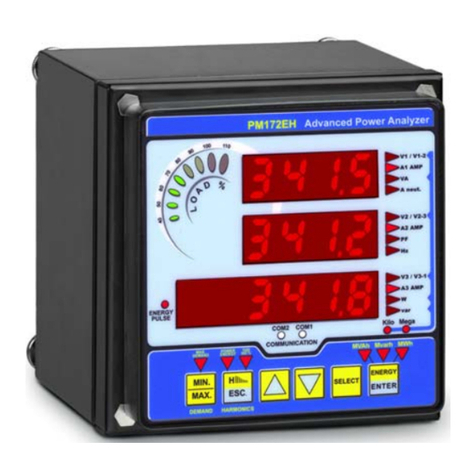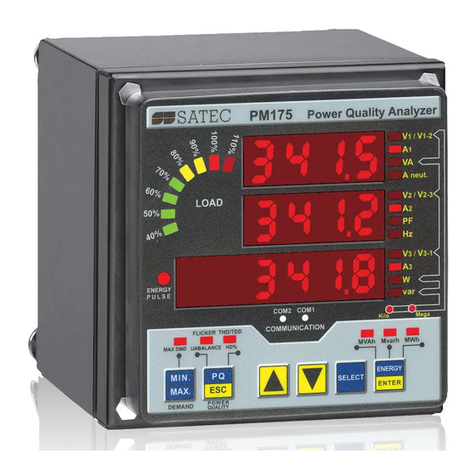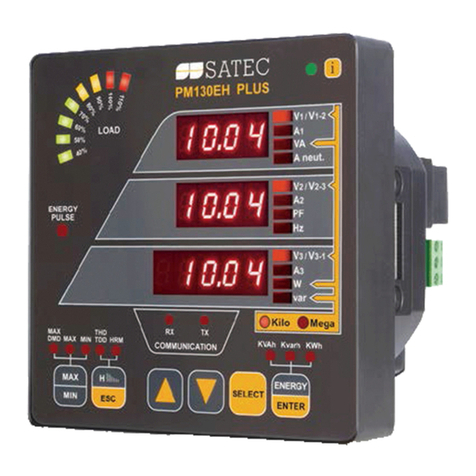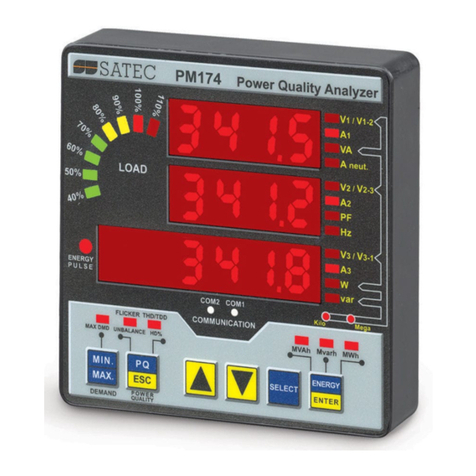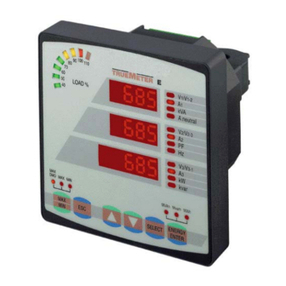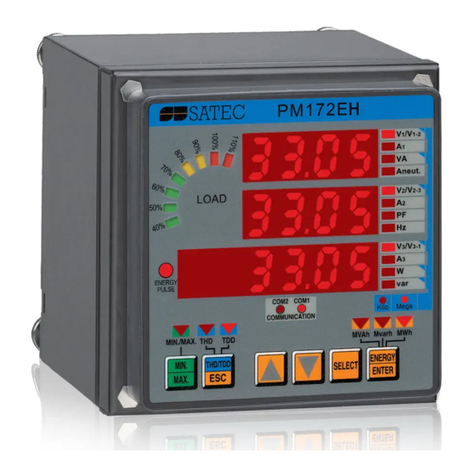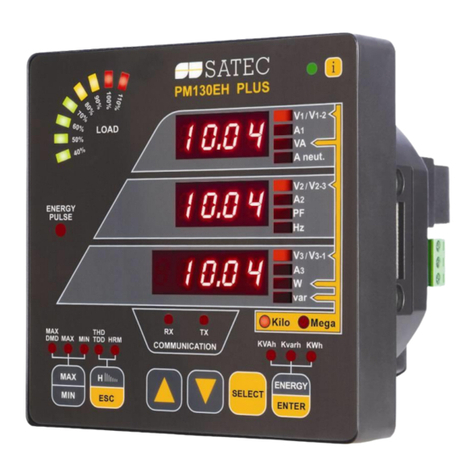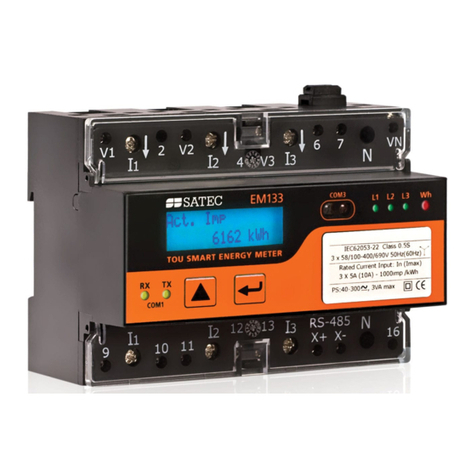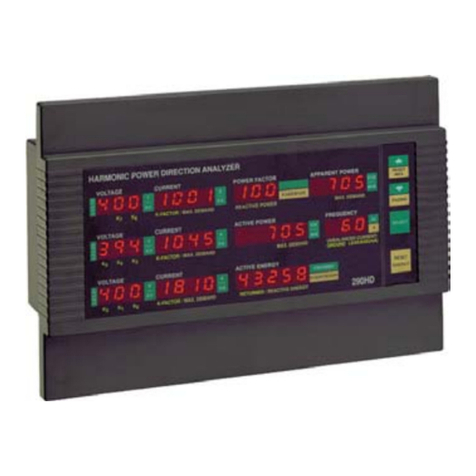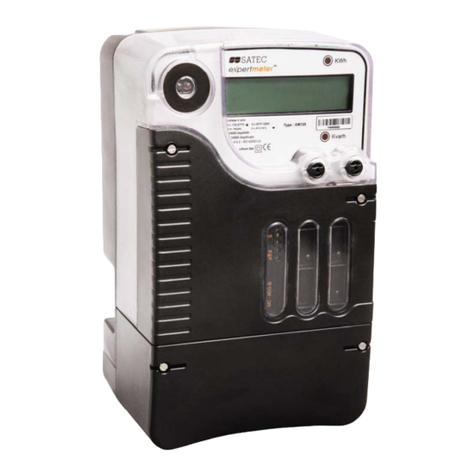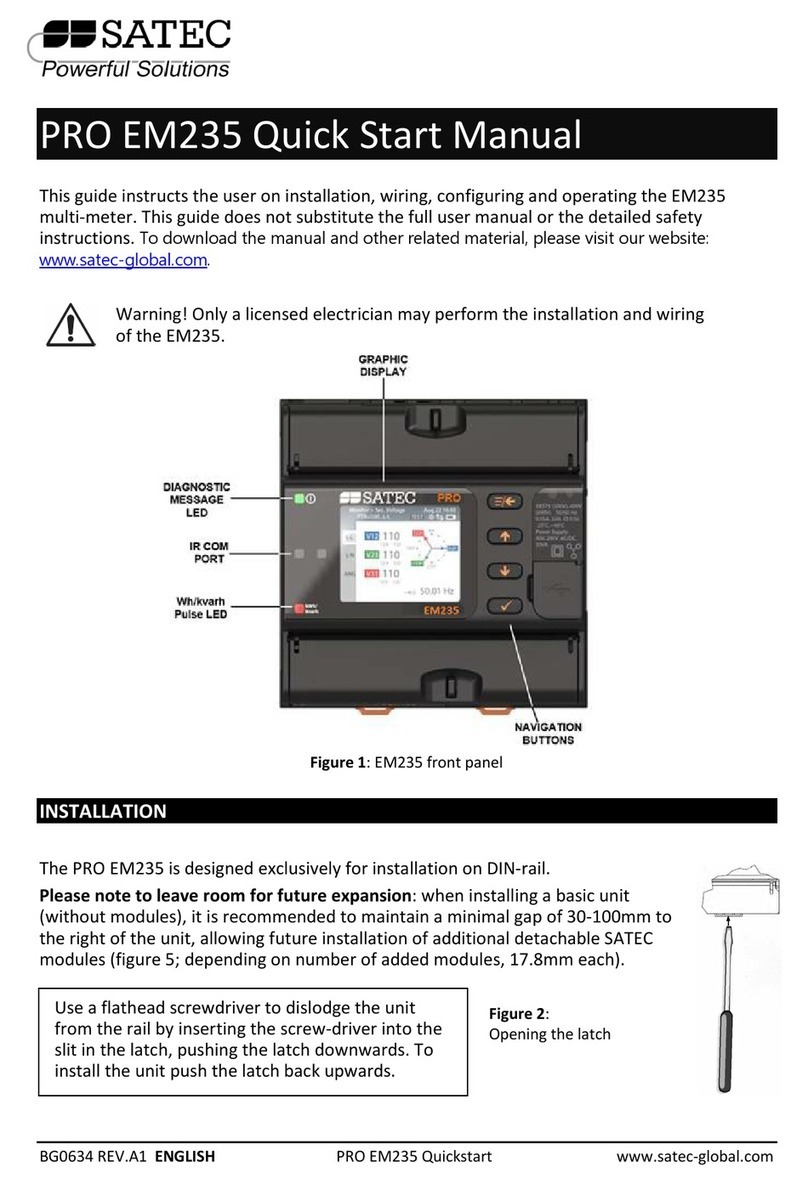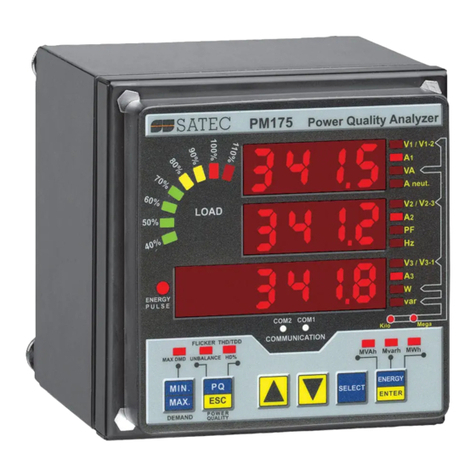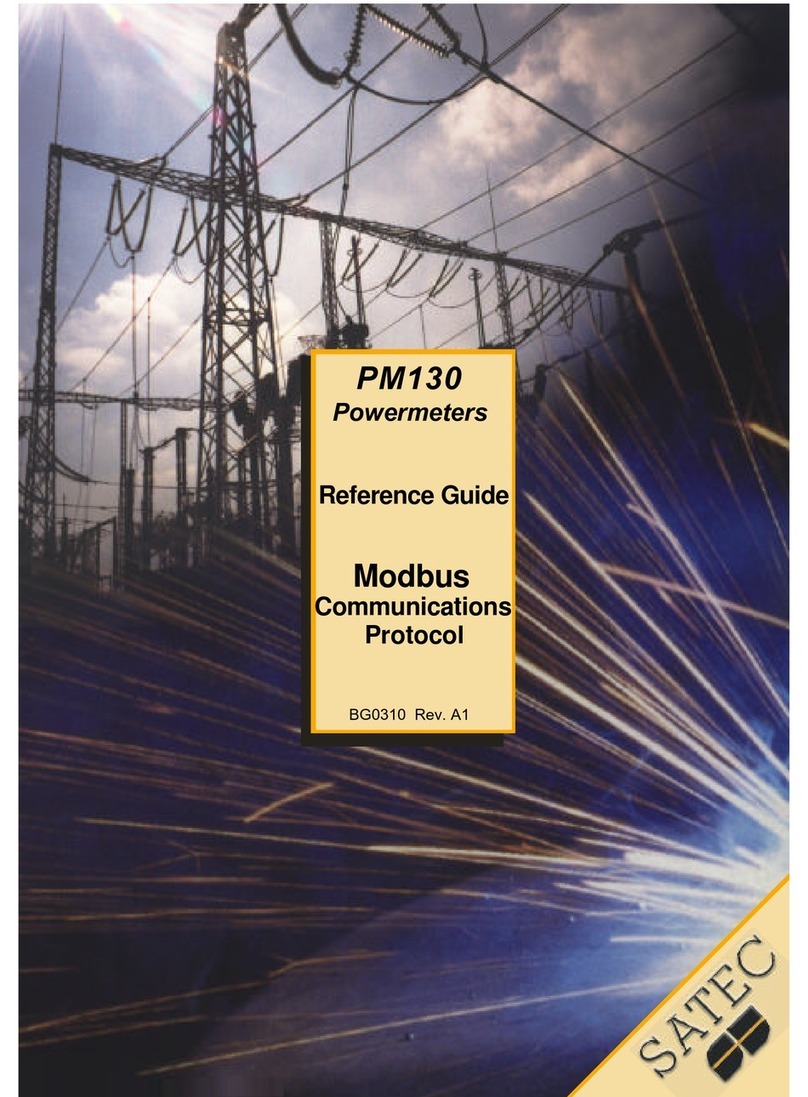9
AI indicates Analog-Input point, BC - Binary Counter point.
1The parameter limits are as follows:
Imax (×120% over-range) = 1.2 ×CT primary current [A]
Direct wiring (PT Ratio = 1):
Vmax (690 V input option) = 828.0 V
Vmax (120 V input option) = 144.0 V
Pmax = (Imax ×Vmax ×3) [kW x 0.001] if wiring mode is 4LN3 or 3LN3
Pmax = (Imax ×Vmax ×2) [kW x 0.001] if wiring mode is 4LL3, 3OP2, 3DIR2, 3OP3 or 3LL3
Wiring via PTs (PT Ratio > 1):
Vmax (690 V input option) = 144 ×PT Ratio [V]
Vmax (120 V input option) = 144 ×PT Ratio [V]
Pmax = (Imax ×Vmax ×3)/1000 [MW x 0.001] if wiring mode is 4LN3 or 3LN3
Pmax = (Imax ×Vmax ×2)/1000 [MW x 0.001] if wiring mode is 4LL3, 3OP2, 3DIR2, 3OP3 or 3LL3
2When using direct wiring (PT Ratio = 1), voltages are transmitted in 0.1 V units, currents in 0.01 A units, and powers in
0.001 kW/kvar/kVA units. For wiring via PT (PT Ratio > 1), voltages are transmitted in 1V units, currents in 0.01 A units,
and powers in 1 kW/kvar/kVA units.
3To get block interval demand readings, set the number of demand periods equal to 1 (see Table 3-4).
4When the 4LN3 or 3LN3 wiring mode is selected, the voltages will be line-to-neutral; for any other wiring mode, they will be
line-to-line voltages.
5Variations specified in the table show those that should be used to read a full-range value without a possible over-range
error when no scaling is used to accommodate the value to the requested object size (see Section 3, Scaling Analog Input
Objects).
6Available starting with F/W Version 4.93.3 or later.
Basic Setup Registers
These registers are used to access the basic setup parameters. In the event that the modulus field is not equal to
1, the value received from the Powermeter must be multiplied by the modulus. When written, such a number
should be divided by the modulus. The basic setup registers (Object 40, Variation 2) are assigned via Class 0
Group Assignment setup by default.
Table 3-2 Basic Setup Registers
Object : Var Parameter Object : Point Range
40:2 (read)
41:2 (write)
Wiring mode 1AO:0 0 = 3OP2, 1 = 4LN3, 2 = 3DIR2,
3 = 4LL3, 4 = 3OP3, 5 = 3LN3,
6 = 3LL3
40:1 (read)
41:1 (write)
PT ratio AO:1 10 to 65000 ×0.1
40:1 (read)
41:1 (write)
CT primary current AO:2 1 to 10000 A
40:2 (read)
41:2 (write)
Power demand period AO:3 1,2,5,10,15,20,30,60 min
255 = external synchronization
40:2 (read)
41:2 (write)
Volt/ampere demand period AO:4 0 to 1800 sec
40:2 (read)
41:2 (write)
Averaging buffer size AO:5 8, 16, 32
40:2 (read)
41:2 (write)
Reset enable/disable AO:6 0 = disable, 1 = enable
40:1 (read) Reserved AO:7 Read as 65535
40:2 (read)
41:2 (write)
The number of demand periods AO:8 1 – 15
40:1 (read) Reserved AO:9 Read as 65535
40:1 (read) Reserved AO:10 Read as 65535
40:2 (read)
41:2 (write)
Nominal frequency AO:11 50, 60 Hz
40:2 (read)
41:2 (write)
Maximum demand load current AO:12 0 to 10000 A (0 = CT primary current)
AO indicates Analog-Output-Status (Read) and Analog-Output-Block (Write) points.
1The wiring mode options are as follows:
3OP2 - 3-wire open delta using 2 CTs (2 element)
4LN3 - 4-wire WYE using 3 PTs (3 element), line-to-neutral voltage readings

